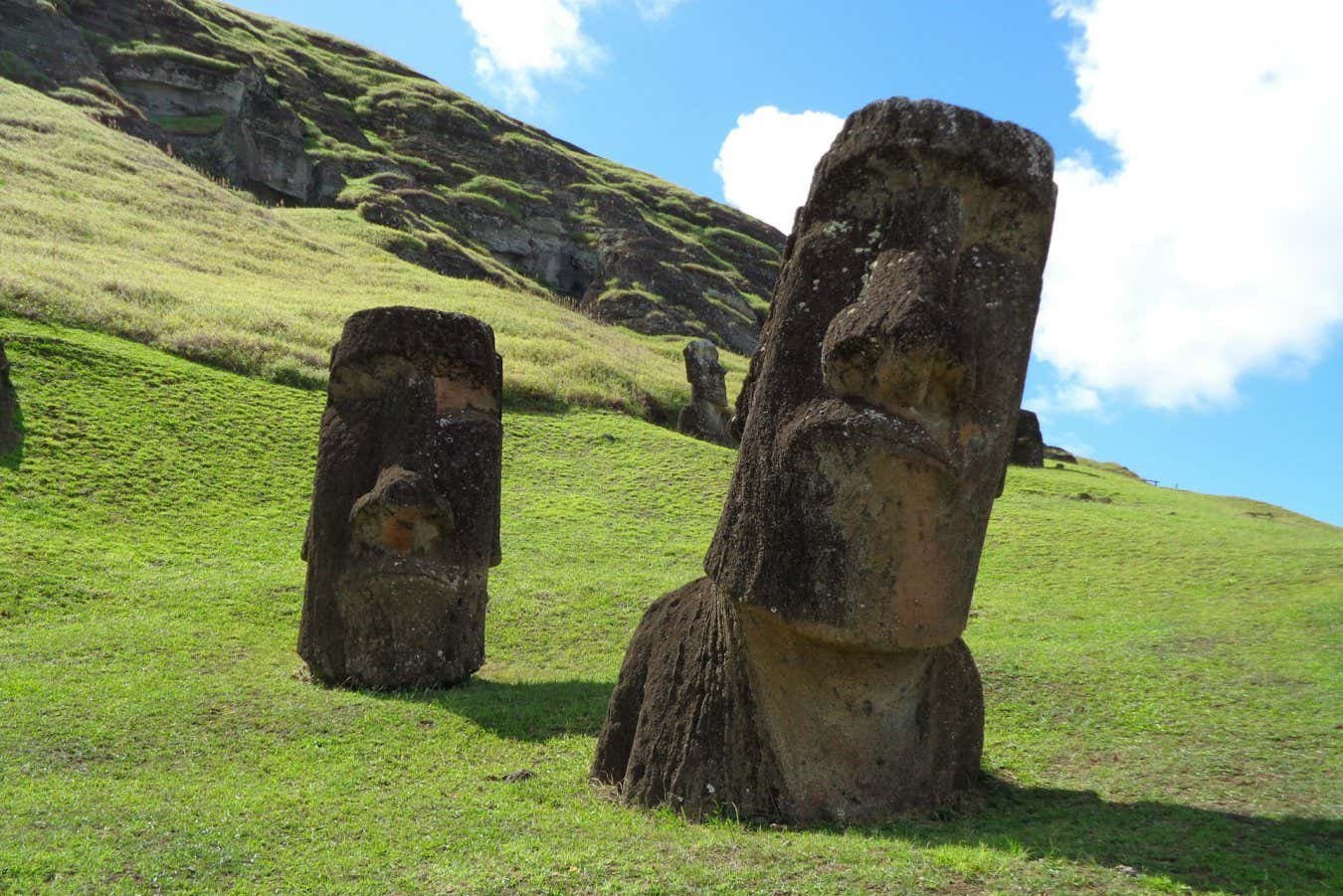
The people of Easter Island built hundreds of monolithic statues called moai
Stephanie Morcinek via Unsplash
The widespread claim that the ancient people of Easter Island experienced a societal collapse due to overexploitation of natural resources has been thrown into fresh doubt. Instead, there was a small and stable population that lived sustainably for centuries before the arrival of Europeans, an analysis of historical farming practices suggests.
Famous for its towering stone statues, Easter Island – also known as Rapa Nui – in the Pacific Ocean is thought to have been inhabited by Polynesians since around AD 1200. At that time, its 164-square kilometres were covered in palm forests, but these were quickly destroyed, probably by a combination of rats and over-harvesting.
According to a narrative popularised by the historian Jared Diamond, the unsustainable use of resources led to runaway population growth and a subsequent collapse before Europeans arrived in 1722.
The islanders mainly supported themselves through rock gardening, a form of agriculture that has been widely practised in places where soils are poor or the climate harsh. Stones are scattered around fields to create microhabitats and wind breaks, preserve moisture and supply important minerals.
Previous studies have suggested that as much as 21 square kilometres of Rapa Nui was covered in rock gardens, supporting a population of up to 16,000 people.
To find out more, Carl Lipo at Binghamton University in New York and his colleagues used satellite imagery combined with machine learning models trained with ground surveys to generate an island-wide estimate of rock gardening sites.
This found that the maximum area of the stone gardens was only 0.76 square kilometres. The researchers estimate that such a system wouldn’t have been able to support more than 4000 people – roughly the population estimated to live there when Europeans arrived. In other words, the team argues, the population remained remarkably stable.

Researcher Robert DiNapoli, from Binghamton University in New York, inspects a rock garden
Carl Lipo
Lipo says that those who continue to use Easter Island as a case study of degradation and collapse need to look at the empirical evidence. “The results we produce continue to support our hypothesis that the island never… [had] a massive population that overconsumed its resources,” he says. “Overall, we do not see evidence in the archaeological record of a population collapse before European arrival.”
Instead, there is growing weight behind the suggestion that islanders transformed their environment in ways that allowed them to live sustainably for generations, says Lipo. “Small populations and low-density, dispersed settlement patterns enabled the communities to reliably produce sufficient food for more than 500 years until the arrival of Europeans.”
Dale F. Simpson at the University of Illinois says more work is needed to evaluate whether the precision and accuracy of the model calculations used in the research fit the archaeological record.
“Overall, this [study] highlights that although the Rapa Nui [people] are often portrayed as a collapsed culture bounded by socio-political competition, ecological overexploitation and megalithic overproduction, the discussion would be better served if it recognised the Rapa Nui as a Polynesian island culture of adaptation and survival that has thrived for almost a millennium,” says Simpson.
Topics:

Felecia Phillips Ollie DD (h.c.) is the inspiring leader and founder of The Equality Network LLC (TEN). With a background in coaching, travel, and a career in news, Felecia brings a unique perspective to promoting diversity and inclusion. Holding a Bachelor’s Degree in English/Communications, she is passionate about creating a more inclusive future. From graduating from Mississippi Valley State University to leading initiatives like the Washington State Department of Ecology’s Equal Employment Opportunity Program, Felecia is dedicated to making a positive impact. Join her journey on our blog as she shares insights and leads the charge for equity through The Equality Network.




